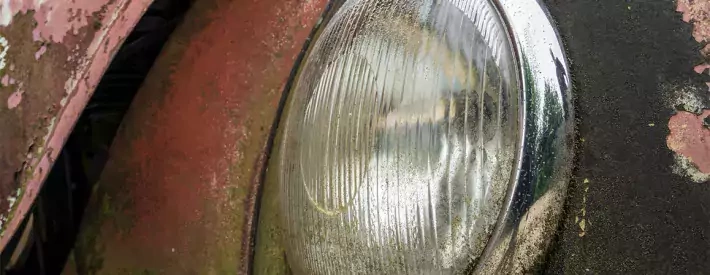Why even a farm van needs all its defects noted down

In this article: It’s easy to become complacent, but no one can really predict which vehicles have reached their end of life, so don’t get caught out, conduct your MOT tests fully
Probably most of the vehicles that end up at the breakers yard are MOT failures. It’s often a simple costing exercise – the price of repairs against the price of a newer vehicle.
We can become complacent. Its all too easy to predict which vehicles will be repaired and which will be scrapped. It was this simple prediction which ended up with a tester producing a failure certificate which a first-year apprentice would be ashamed of, even though he’s a competent, time served technician.
A truly vile old van was submitted for test by a farmer. With the driver’s door open you could see the tips of your boots through the floor. At the back end the chassis and sills were very corroded, and the tester, perhaps not unreasonably, assumed this old van was off to where it belonged – the scrap yard in the sky.
As a result, he listed the floorpan, sills and rear spring hangers correctly. They all failed under specified areas. But assuming this would be enough to write it off, he failed to list a number of other defects, didn’t bother with an emissions test and only issued a VT30 failure notice. He didn’t even issue an advisory notice. He saved about 45 minutes in not doing all the tests he should have done, and having to write War and Peace on a VT30.
Unfortunately, the farmer costed it out as a cheap fix, as a weekend in his workshop with a welder didn’t cost much – no parts were needed. The problems started when the tester found the van booked in for a retest.
DVSA don’t expect a tester to give up half through a test. If they visit an MOT centre and find a recently tested end of life vehicle, they‘ll almost certainly want to re-examine it. They will expect that:
- All of the stages of the test that can be completed have been.
- The defects have been fairly assessed, for example no items failed that on a better vehicle would have simply been advised on.
- All testable defects have either been advised on or failed.
- That the audit trail can support the test – for example, where is the emissions print out?
- If it’s an Automated Test Lane does the brake roller tester have the brake test stored in its memory?
DVSA accept that some things may not be tested, for instance a brake test that can’t be completed because of a bulging tyre. But if the customer has paid for a test, they should get every stage that can be reasonably completed.
How not to get caught out
Sometimes a customer can be shown some of the obvious defects before the test; you may remember the vehicle from last year and get to speak to them first. Vehicles in very poor condition can easily take 1 ½ hours to complete. Sometimes it’s a cheaper option for the garage to show the customer the state of the underside to see if they want to continue.
But remember: A misleading trade statement is an offence, so don’t point to things that don’t fail and claim they do.
However, don’t let this become an everyday occurrence, as you will distort your overall failure rate, which in turn will alter your test quality information. Luckily, we don’t normally see wrecks like that van often.
One final thought: remember, when testing each vehicle, irrespective of value and overall condition, do a proper test.




